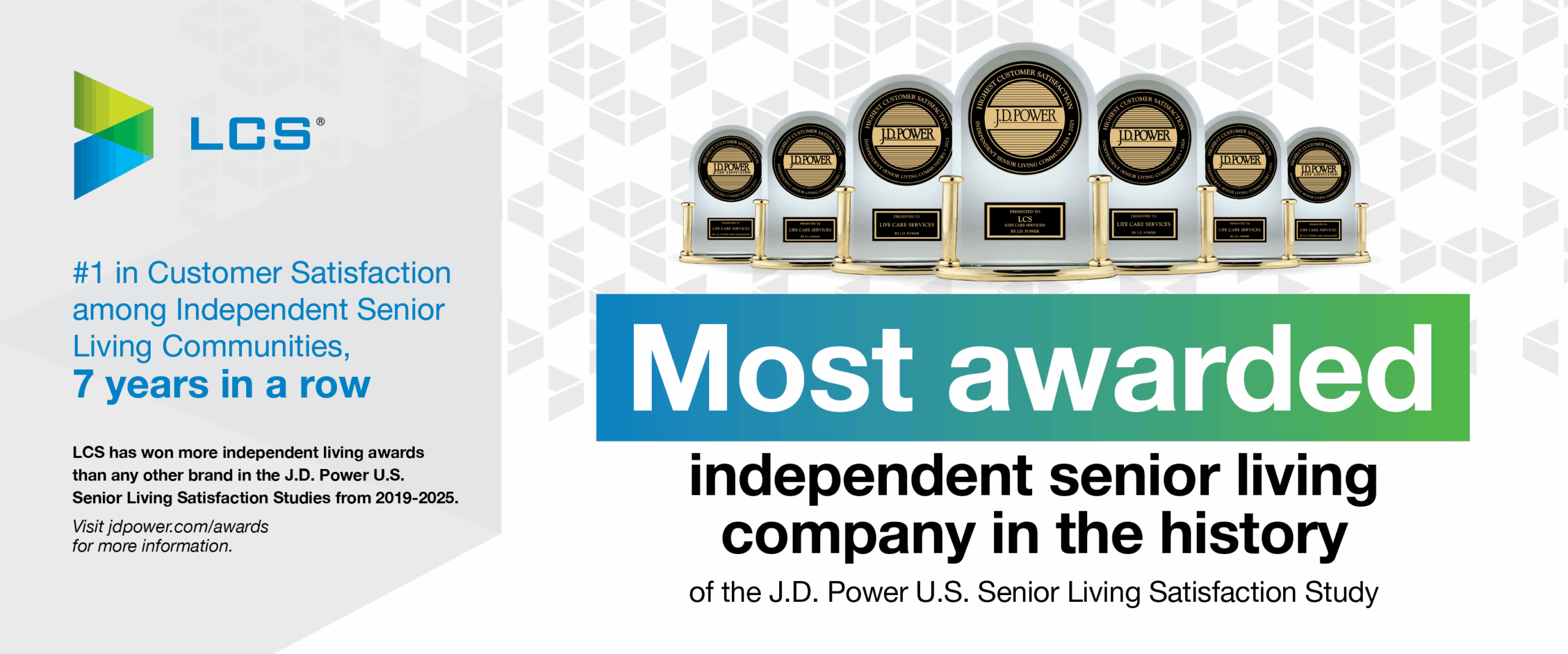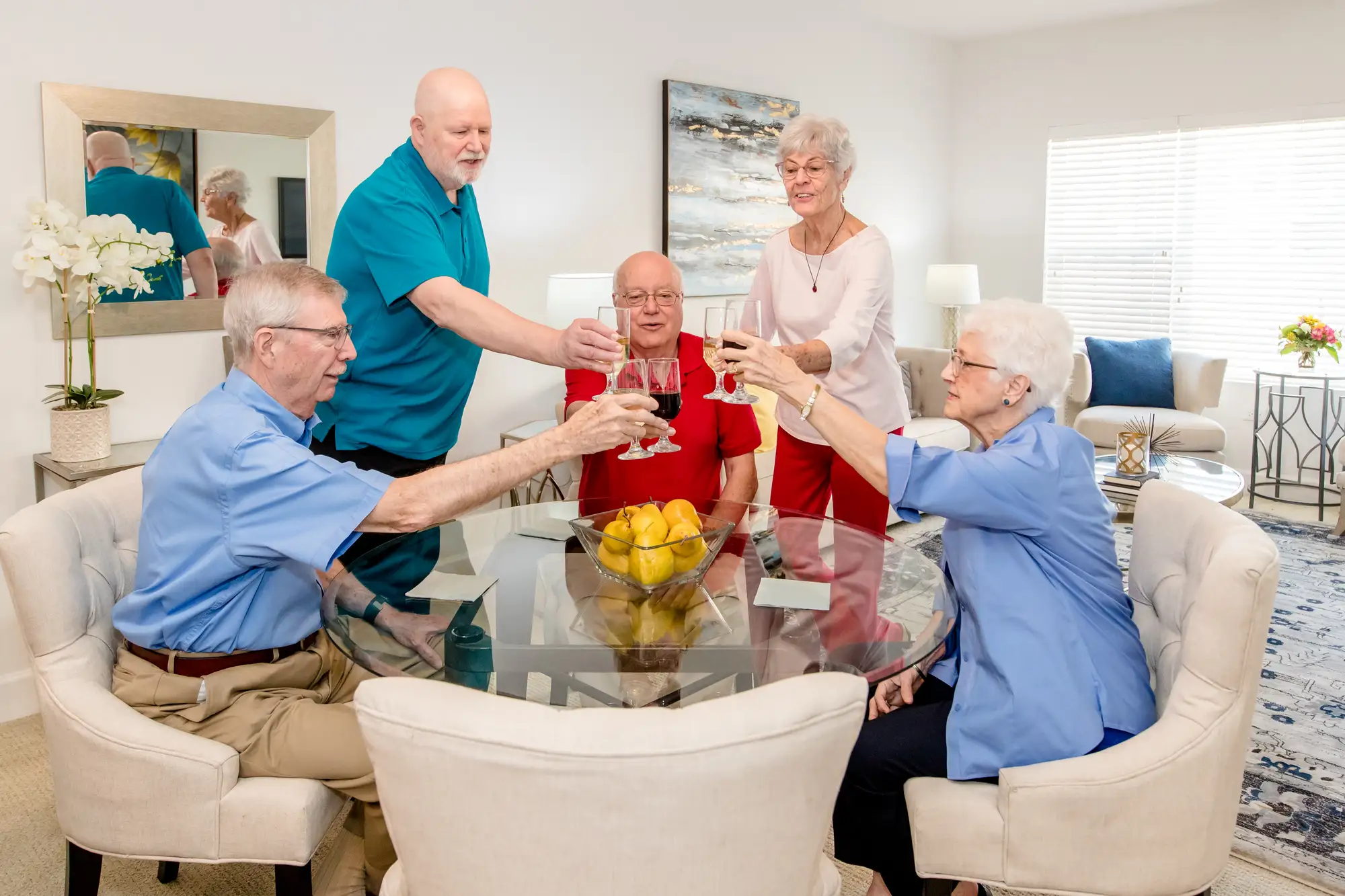If you’re looking for an active retirement that gives you the freedom to pursue your interests, there are multiple living options to choose from. Two of the most popular are a rental retirement community and a Life Plan Community. Each option appears to come with a distinct price tag and unique qualities. How do you know which senior living community suits you best?
When you are comparing Life Plan Communities versus rental communities, it’s important to know the differences between senior living buy-in vs. monthly rent and what you can expect from each. This blog post will provide an overview of what you need to know about senior living options to make a more informed decision.
Rental community.
Choosing a rental retirement community may be a desirable choice if you can maintain independent living without requiring additional levels of care. When comparing Life Plan Communities to rental communities, a notable distinction is that the rental option does not require an entrance fee.
However, there are additional factors to consider beyond the current cost. This is a general overview of what rental senior living communities offer:
- Fees: When you sign a lease, you agree to stay for a certain period, like a month or a year. You might not have to pay to move in, but you’ll probably need to put down a security deposit, which you might get back later. Your monthly fee primarily depends on the size of your residence and possibly what amenities you use.
- Lifestyle: Your monthly payments usually allow you to access a range of services and amenities, which may differ depending on the community. Many communities offer meal services, housekeeping, maintenance and transportation. They may also provide on-site events and activities. It’s important to carefully examine your rental agreement to make sure you’re clear about included services and those that may require an additional fee added to your monthly payment.
- Care: While most communities offer independent living, some may also provide higher levels of care, such as assisted living services, either within your residence or in a separate area of the community, as well as dementia care services. These additional services may require payment at full market rates.

Life Plan Community.
Another name for a Life Plan Community is Continuing Care Retirement Community (CCRC). This type of community offers maintenance-free independent living plus access to a continuum of care – typically including assisted living, memory care, skilled nursing and rehabilitation. Care is usually provided on-site or nearby, so you don’t have to worry about making a move during a health emergency. Other features of buy-in senior living communities include:
- Fees: There are two main fees associated with Life Plan Communities: an initial entrance fee and a monthly fee. When you have this type of contract, you may be able to benefit from the tax advantages it offers. This can save you money over time. You may want to consult with your tax advisor to go over your specific situation. The entrance fee guarantees discounted rates for potential future care needs; however, the extent of the discount varies based on the terms of the contract you agree to.
- Lifestyle: In Continuing Care Retirement Communities, your monthly fee covers utilities, housekeeping, maintenance, and a choice of meal plans. It also includes access to activities, programs and classes, as well as on-site cultural events. Additionally, transportation services are provided along with the use of all community amenities.
- Care: Although a buy-in option may initially appear more costly due to the upfront entrance fee, it’s essential to consider the long-term benefits. The lower-cost, predictably priced long-term care provided by a buy-in community offers invaluable peace of mind, which is difficult to quantify purely in financial terms.
Planning for your future.
When deciding between a Life Plan Community and a rental community, the primary consideration revolves around whether you anticipate requiring care in the future.
Before making a decision, it’s crucial to note that the U.S. Department of Health and Human Services states that 70% of seniors age 65 and above will require some form of long-term care, typically lasting around three years on average. Additionally, it’s important to consider the future care needs of your spouse.
Based on the most recent Genworth Cost of Care Survey, the average monthly cost for assisted living in Chicago is $4,429, while a private skilled nursing room typically costs $9,086 per month.
At Wyndemere, we offer a variety of contracts ranging from LifeCare to fee-for-service options and are sure to have one that will fit your budget. Our LifeCare contract option provides you with unlimited days of quality, long-term care at essentially the same monthly fee.
Experience our Life Plan Community firsthand.
Wyndemere offers everything: independent living, assisted living, skilled nursing, memory care and rehabilitation. To learn more about the engaging lifestyle of residential living and peace of mind of on-site care that Wyndemere offers you and your family, contact us today and schedule a tour. You can discuss your options with one of our senior living sales counselors.





